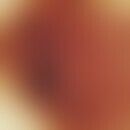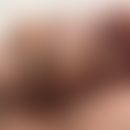Synonym(s)
DefinitionThis section has been translated automatically.
Dental term for a negative impression of the jaw and the use of specially suitable impression materials. An impression of the dentition or teeth is necessary to find the right bite, especially for crowns. Impressions are also made for dentures and larger fillings.
General informationThis section has been translated automatically.
Either elastic materials with rubber-like properties or rigid materials are used for the impression. Impressions of the teeth and jaws are taken either in a resting state or in function. Then the movements of the chewing muscles and the ligaments are also recorded and can be taken into account by making the appropriate recesses to take into account the conditions in the mouth when making a dental prosthesis. Impression material means impression material for taking an impression of the teeth and jaws.
Impression taking or taking an impression is the most common procedure at the dentist, where areas of the jaw or teeth are reproduced as accurately as possible. This enables the dentist to examine the oral situation on a model. An impression can be made with prefabricated aids, the impression tray or ready-made tray as well as template, the individual impression tray or functional tray, which is individually made for each oral situation. Impressions can be divided into the rigid impression and the elastic impression:
- elastic-irreversible impression, after setting of the material it is movable, the shape does not change any more.
- Elastic-reversible impression, behaves unstable and changes its shape when heated.
- rigid-irreversible impression, does not change and has no elasticity.
With an impression the teeth can be easily reproduced in a plastic. These are passed on to a dental laboratory, where replicas of the dentition are made or usually cast in plaster. After completion, the dentist has a good opportunity to see the dentition with his own eyes and to make adjustments for dental crowns etc. The orthodontist will also take impressions (impressions) in order to be able to determine if there is a malposition of the jaw and if necessary, to adjust the teeth to avoid jaw problems.
For the fabrication of prosthetic works, the dentist usually needs models which allow an exact reproduction of the oral conditions in the dental laboratory. For the fabrication of these models, a careful impression of the jaw with the adjacent soft tissue is required. In the dental laboratory these impressions are poured by the dental technician. With the help of a bite registration, the models thus obtained can then be assigned to each other in an articulator (joint simulator). The impression thus represents the most important link between the dental treatment on the patient and the dental technical work in the dental laboratory. In the dental practice, however, the term "impression" is often used instead of "impression", which is not quite correct, since no pressure is usually exerted during the impression.
Impression types: There is a wide range of different types of impressions. It is important to distinguish between anatomical impressions and functional impressions.
Anatomical impression: Anatomical impressions reproduce the teeth at rest with the surrounding mucous membranes and ligaments. The anatomical impression is also called a situation impression because the normal situation in the mouth is reproduced. The anatomical impression is taken to obtain study models for treatment planning or working models for the fabrication of functional trays, temporaries or orthodontic appliances.
Working model tooth (study models): Study models (plaster models) are always required for orthodontic diagnostics. For this purpose, appropriate impressions of the upper and lower jaws are taken with alginate as impression material and then filled with plaster. The resulting models should show not only the teeth but also the alveolar processes, the hard palate and the beginnings of the lip ligaments and cheek ligaments. The models are oriented to each other in occlusion and the edges are trimmed accordingly with a plaster trimmer. The rear surface of the plaster models is ground so that it is perpendicular to the longitudinal fold in the palate, the raphe palati. The study models of the upper and lower jaws are then carefully examined. This is also referred to as a three-dimensional model analysis, since the models are carefully evaluated in the three spatial planes in the sagittal (anterior to posterior), transverse (right to left) and vertical (top to bottom) directions. Since the length and width development of the dental arches in normal dentition is directly related to the width of the upper incisors, the length and width of the dental arches are first measured at precisely defined reference points, as well as the width of the upper incisors. The values obtained are then compared with standard values so that the dental arches can be assessed in the sagittal and transverse directions. In addition, the centre line of the dental arch shape is examined for any displacement to one side. In the vertical direction, the dental arches are examined to determine whether individual teeth are shortened or extended. After the examination of the dental arches, all further positional deviations of individual teeth in sagittal, transverse and vertical direction are noted. Subsequently, the occlusion and the position of the jaws in relation to each other are assessed.
Functional impression: During the functional impression, the movement of the mucous membranes and ligaments is reproduced. During the functional impression, active and passive movements of the cheeks and lips, the traction as well as the soft palate are taken during the setting time of the impression material. Functional impressions are particularly important for the fabrication of complete dentures (full dentures). The movable oral mucosa at the future edge of the denture as the functional edge must be carefully moulded so that the denture cannot be levered off later by functional movements.
Impression taking of ground teeth: When taking an impression, it is important that the preparation margin is reproduced exactly.
Usual procedure for taking impressions:
- Corrective impression
- Double mix impression
- Sandwich impression
In the corrective impression, the gingival furrow is first widened with cotton threads (retraction threads) or elastic rings in order to enable an exact reproduction of the preparation margin. Then, a preliminary impression is taken with a kneadable or viscous impression material while the threads are still in place. The impression is then thoroughly cleaned and dried. In order to be able to use the tray again for the subsequent corrective impression, the disturbing impressions of the interdental spaces and any existing bridge elements are cut out. For the correction impression, the retraction threads are removed and the tooth stumps are thoroughly dried. Subsequently, a thin-flowing impression material is filled into the tray. In addition, it is also recommended to inject the thin-flowing impression material into the opened and dried gingival pocket with a special impression syringe. The impression tray is then placed back into the mouth.
With the double mix impression, the impression tray is only used once, in contrast to the correction impression. After removing the stitches and drying the dies, a thin-flowing impression material is injected around the teeth and into the gingival pocket. At the same time, a viscous or kneadable impression material is filled into the impression tray. The tray is then inserted so that both materials bond together in the mouth.
With the sandwich impression, the impression tray is only used once, as with the double mix impression. For this purpose, a kneadable impression material and a corresponding thin- or medium-flowing impression material are mixed simultaneously. Then the impression tray is first charged with the kneadable impression material and preformed in a trough shape in the area of the rows of teeth. The thin- or medium-flowing impression material is sandwiched onto this layer and additionally injected around the teeth in the mouth. Then the impression tray is inserted so that the materials can bond in the mouth.
Mouth-closed impression: In addition to taking the impression with the mouth open, it is also possible to take a mouth-closed impression. For the fabrication of full dentures, the mouth-closed impression method has the advantage that both jaws are taken at the same time and their position relative to each other is reproduced.



